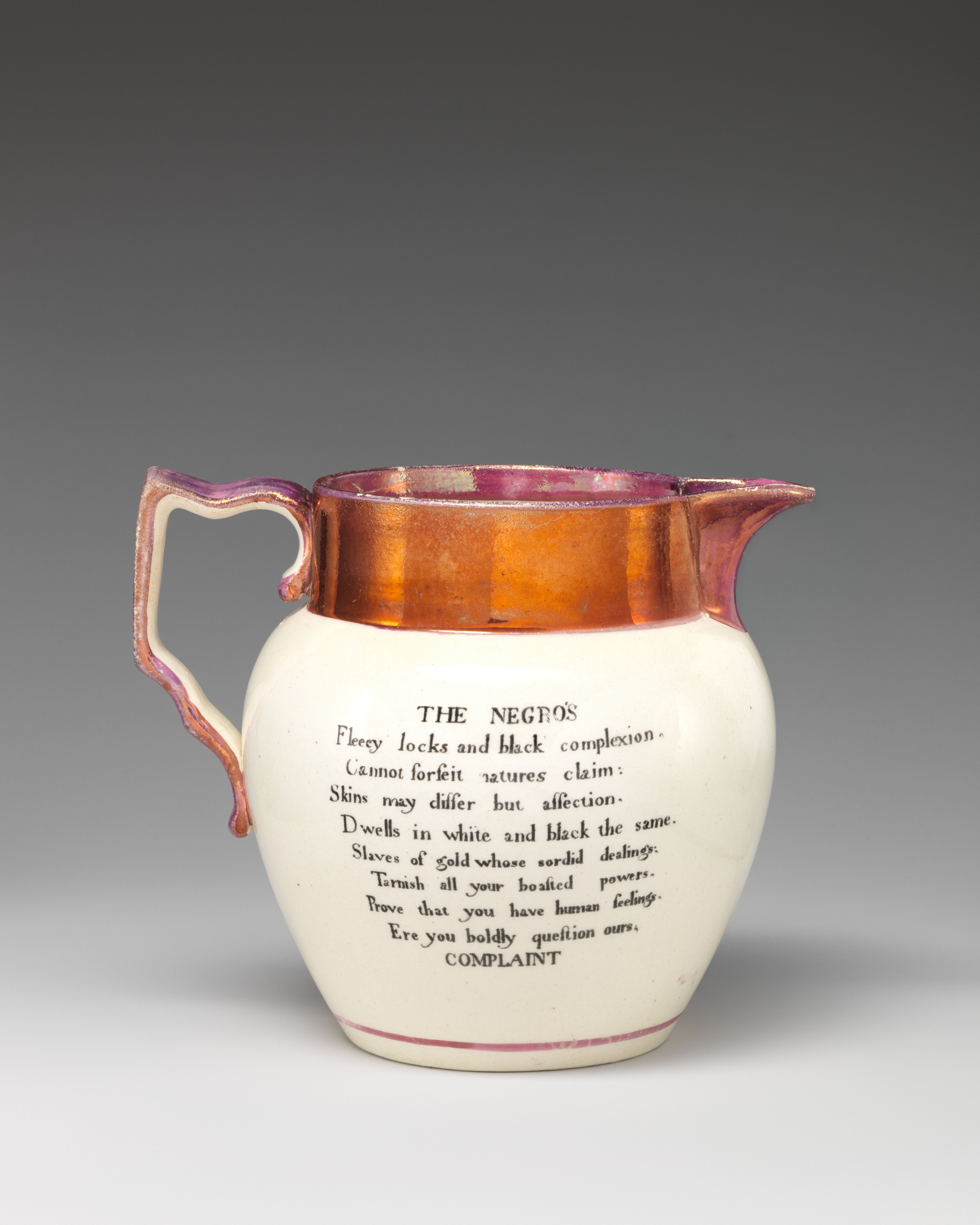Abolitionist Jug
British, probably Stafforshire or Sunderland
Not on view
Though humble in form, luster-glazed and transfer-printed ceramics objects such as this jug served as powerful vehicles for political change. Antislavery messages reached different classes of British society. Moreover, the quotidian form of the pitcher pointed to the important role that women played as consumers in the domestic sphere in voicing public opposition to the slave trade. The image of the freed slave on one side of the jug references the most famous piece of abolitionist ceramics, Wedgwood’s antislavery medallion, produced in 1787 to commemorate the establishment of the Society for Effecting the Abolition of the Slave Trade that year in London. William Cowper penned the abolitionist poem, “The Negro’s Complaint,” excerpted on the other side of the jug in 1788. Wedgwood’s medallion features a kneeling enslaved black man in chains, with the words “Am I not a man and a brother?” impressed in relief above him. The lusterware jug changes the word order found on Wedgwood’s medallion somewhat with the phrase, “Am not I a man and a brother?.” Though this jug was made some thirty years after Wedgwood’s medallion, abolition remained an active cause: Britain enacted the Slave Trade Act in 1807 prohibiting the slave trade, but did not completely abolish the practice of slavery until the Slavery Abolition Act of 1833.
Due to rights restrictions, this image cannot be enlarged, viewed at full screen, or downloaded.
This artwork is meant to be viewed from right to left. Scroll left to view more.




